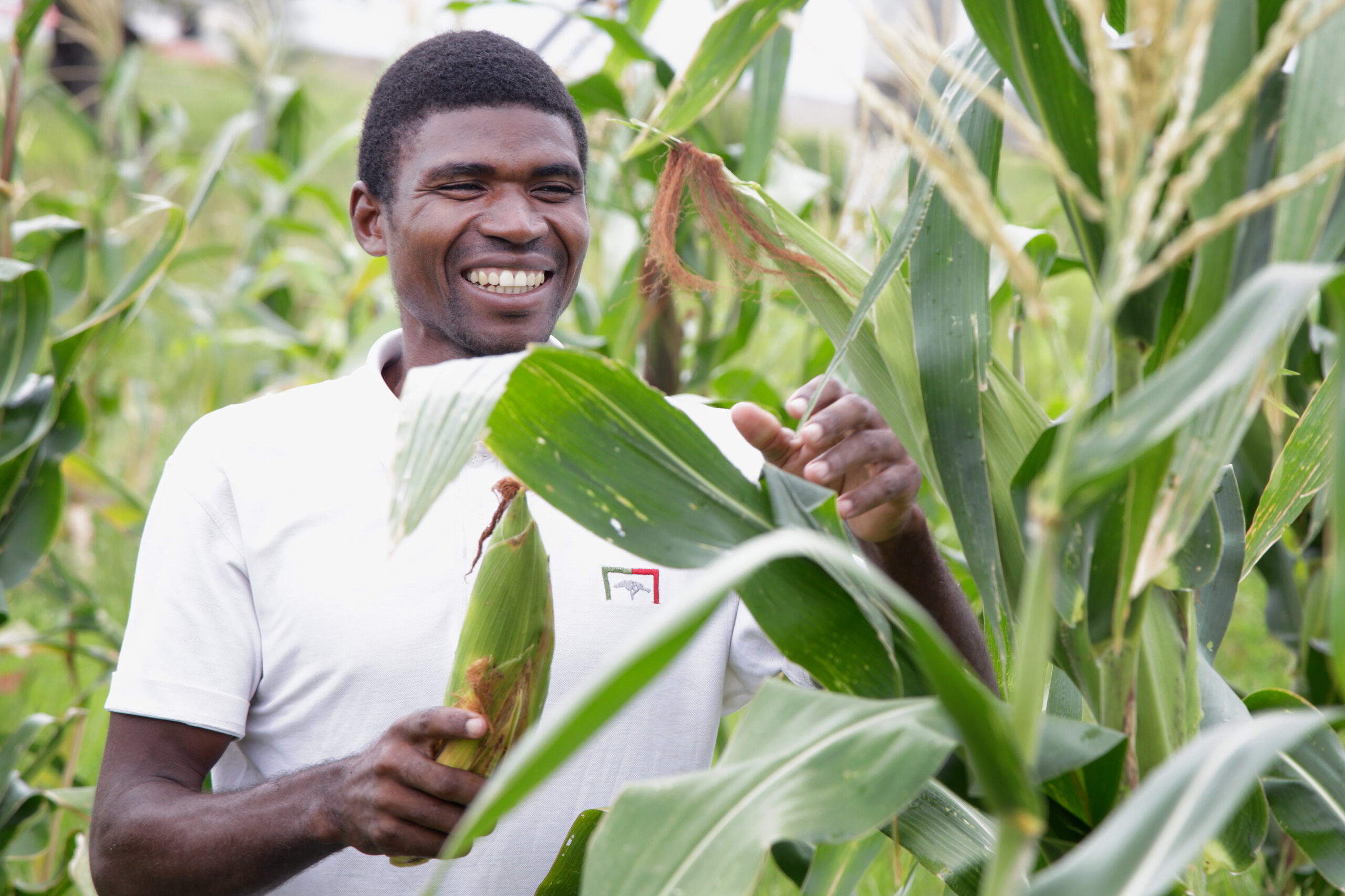
The Role Of Cooperatives In Empowering Small-Scale Farmers

Cooperatives play a vital role in empowering small-scale farmers. By joining together, farmers are able to pool their resources to improve their bargaining power in the market. Cooperatives also provide access to credit facilities, technical support, and training programs that help farmers improve their productivity and profitability. Through cooperatives, small-scale farmers can also share knowledge and best practices with one another, and collectively negotiate better prices for their products. This enables them to compete more effectively in the global marketplace and improve their standard of living.
In the intricate tapestry of global agriculture, small-scale farmers emerge as the unsung heroes, toiling tirelessly to feed communities and nations. However, their journey is often fraught with challenges—limited resources, vulnerability to market fluctuations, and a lack of bargaining power. In this context, the concept of agricultural cooperatives stands out as a beacon of empowerment. This article explores the pivotal role that cooperatives play in uplifting small-scale farmers, fostering resilience, and reshaping the landscape of agriculture for a sustainable and equitable future.
1. Understanding Agricultural Cooperatives
1.1 Defining Agricultural Cooperatives
At its core, an agricultural cooperative is a collectively owned and democratically operated enterprise formed by a group of farmers. These cooperatives pool resources, share risks and collectively make decisions to enhance their individual and collective well-being. While the specific structure may vary, the fundamental principle is unity—farmers coming together for mutual benefit.
1.2 Historical Roots
The concept of cooperatives in agriculture has deep historical roots. The Rochdale Society of Equitable Pioneers, formed in 1844 in England, is often considered the prototype of modern cooperatives. This model emphasized democratic decision-making, equitable profit distribution, and the principle of one member, one vote. Over the years, agricultural cooperatives have evolved, adapting to diverse cultural, economic, and agricultural landscapes.
2. The Dynamics of Small-Scale Farming
2.1 Challenges Faced by Small-Scale Farmers
Small-scale farmers, often characterized by limited land holdings and resources, face a myriad of challenges that hinder their ability to thrive. These challenges include but are not limited to fluctuating market prices, lack of access to credit, inadequate infrastructure, and vulnerability to the impacts of climate change. In isolation, these challenges can be insurmountable for individual farmers.
2.2 The Collective Strength
Agricultural cooperatives offer a transformative solution to the challenges faced by small-scale farmers. By joining forces, farmers amplify their collective strength. They can negotiate better prices for their produce, access shared resources such as machinery and storage facilities, and implement sustainable farming practices more effectively. The cooperative model transforms the narrative from isolated struggles to shared victories.
3. Economic Empowerment Through Collective Bargaining
3.1 Market Access and Negotiation
One of the primary functions of agricultural cooperatives is to act as a unified voice in the market. Individually, small-scale farmers often lack the bargaining power to secure fair prices for their produce. Cooperatives, by aggregating the harvests of multiple farmers, negotiate better deals with buyers, processors, and retailers. This not only ensures a more equitable distribution of profits but also stabilizes income for farmers.
3.2 Risk Mitigation
Market volatility is a significant risk for small-scale farmers. Cooperatives provide a buffer against these uncertainties. By diversifying production and collectively managing market risks, cooperatives enhance the resilience of their members. This shared approach to risk mitigation shields farmers from the unpredictable nature of agricultural markets, fostering stability and sustainability.
4. Access to Credit and Resources
4.1 Collective Financial Strength
Access to credit is a critical factor in the success of any farming enterprise. Agricultural cooperatives, by pooling the financial resources of their members, create a more robust financial profile. This collective financial strength improves the cooperative’s ability to secure loans and credit facilities, which can then be distributed among members for various purposes, including purchasing seeds, and equipment, or investing in infrastructure.
4.2 Shared Resources and Services
Cooperatives facilitate the efficient use of resources. Shared machinery, storage facilities, and transportation services are examples of resources that cooperatives can provide. This shared approach not only reduces individual costs for farmers but also ensures optimal utilization of resources. For small-scale farmers who may struggle to afford expensive equipment or lack the means to transport their produce to market, this shared infrastructure is invaluable.
5. Knowledge Sharing and Capacity Building
5.1 Collective Learning
Agricultural cooperatives serve as platforms for collective learning and knowledge sharing. Through workshops, training sessions, and exchange programs, farmers within a cooperative can benefit from each other’s experiences and expertise. This collective learning not only enhances the skills of individual farmers but also promotes the adoption of innovative and sustainable farming practices across the cooperative.
5.2 Technical Assistance
Cooperatives often collaborate with agricultural extension services and other support organizations to provide technical assistance to their members. This can include guidance on crop management, pest control, and the implementation of environmentally sustainable farming practices. By leveraging shared expertise, cooperatives empower small-scale farmers with the knowledge needed to enhance productivity and resilience.
6. Social Empowerment and Community Development
6.1 Social Cohesion
Beyond the economic benefits, agricultural cooperatives foster social cohesion within farming communities. The sense of belonging and shared purpose that cooperatives cultivate strengthen the social fabric of rural communities. This social cohesion goes beyond the cooperative itself, creating a ripple effect that contributes to the overall well-being of the community.
6.2 Women’s Empowerment
Agricultural cooperatives often play a pivotal role in empowering women in agriculture. In many societies, women constitute a significant portion of the agricultural workforce but may face barriers in accessing resources and participating in decision-making. Cooperatives, by promoting gender-inclusive policies and programs, empower women to actively engage in farming activities and community development.
7. Challenges and Opportunities for Agricultural Cooperatives
7.1 Governance and Management
Effective governance and management are crucial for the success of agricultural cooperatives. Challenges may arise in decision-making processes, and conflicts among members or with external stakeholders can impact the cooperative’s functionality. Training programs and mentorship initiatives can address these challenges, ensuring that cooperatives operate democratically and efficiently.
7.2 Scaling Up
While many agricultural cooperatives thrive at the local level, scaling up operations can be a complex endeavor. Cooperative federations and networks can provide a framework for collaboration and resource-sharing among multiple cooperatives, allowing them to collectively address larger markets and challenges.
8. Case Studies: Realizing the Impact
8.1 The Amul Model in India
The Gujarat Cooperative Milk Marketing Federation, popularly known as Amul, stands as a global exemplar of the cooperative model’s impact. Formed in the 1940s, Amul brought together small-scale dairy farmers to collectively market their milk. Today, it is a multi-billion-dollar cooperative that has transformed the lives of millions of farmers and created a robust dairy industry.
8.2 The La Via Campesina Movement
La Via Campesina is an international movement that advocates for the rights of small-scale farmers and promotes agroecology. Comprising millions of members across the globe, this movement exemplifies the power of collective action. Through their cooperatives and networks, farmers in the La Via Campesina movement work towards sustainable agriculture and social justice.
9. Government Support and Policy Frameworks
9.1 Creating an Enabling Environment
Governments play a crucial role in supporting and promoting agricultural cooperatives. Creating an enabling policy environment involves establishing legal frameworks that recognize and protect the rights of cooperatives. Incentives such as tax breaks, subsidies, and access to credit can further encourage the formation and sustainability of agricultural cooperatives
9.2 Collaborative Initiatives
Public-private partnerships and collaborations between government agencies, NGOs, and cooperatives can enhance the impact of cooperative initiatives. These collaborations can involve the provision of technical assistance, infrastructure development, and financial support to strengthen the capacity of cooperatives to address the diverse needs of small-scale farmers.
10. Looking Ahead: The Cooperative Vision for Agriculture
As we envision the future of agriculture, the role of cooperatives emerges as pivotal. In a world grappling with the challenges of food security, climate change, and economic inequality, the cooperative model offers a blueprint for sustainable and inclusive development. Small-scale farmers, when united through cooperatives, become architects of their destinies—nurturing not only crops but also the foundations of resilient and thriving communities.
Cultivating a Collective Legacy In the intricate dance between the soil and the hands that till it, agricultural cooperatives weave a narrative of collective strength, shared prosperity, and sustainable growth. The role of cooperatives in empowering small-scale farmers extends beyond economic considerations; it is a story of resilience, community, and the cultivation of a legacy that transcends generations. As we cultivate this collective legacy, let us recognize the enduring power of unity—a force that transforms not only the fields we sow but also the very fabric of our agricultural future.

